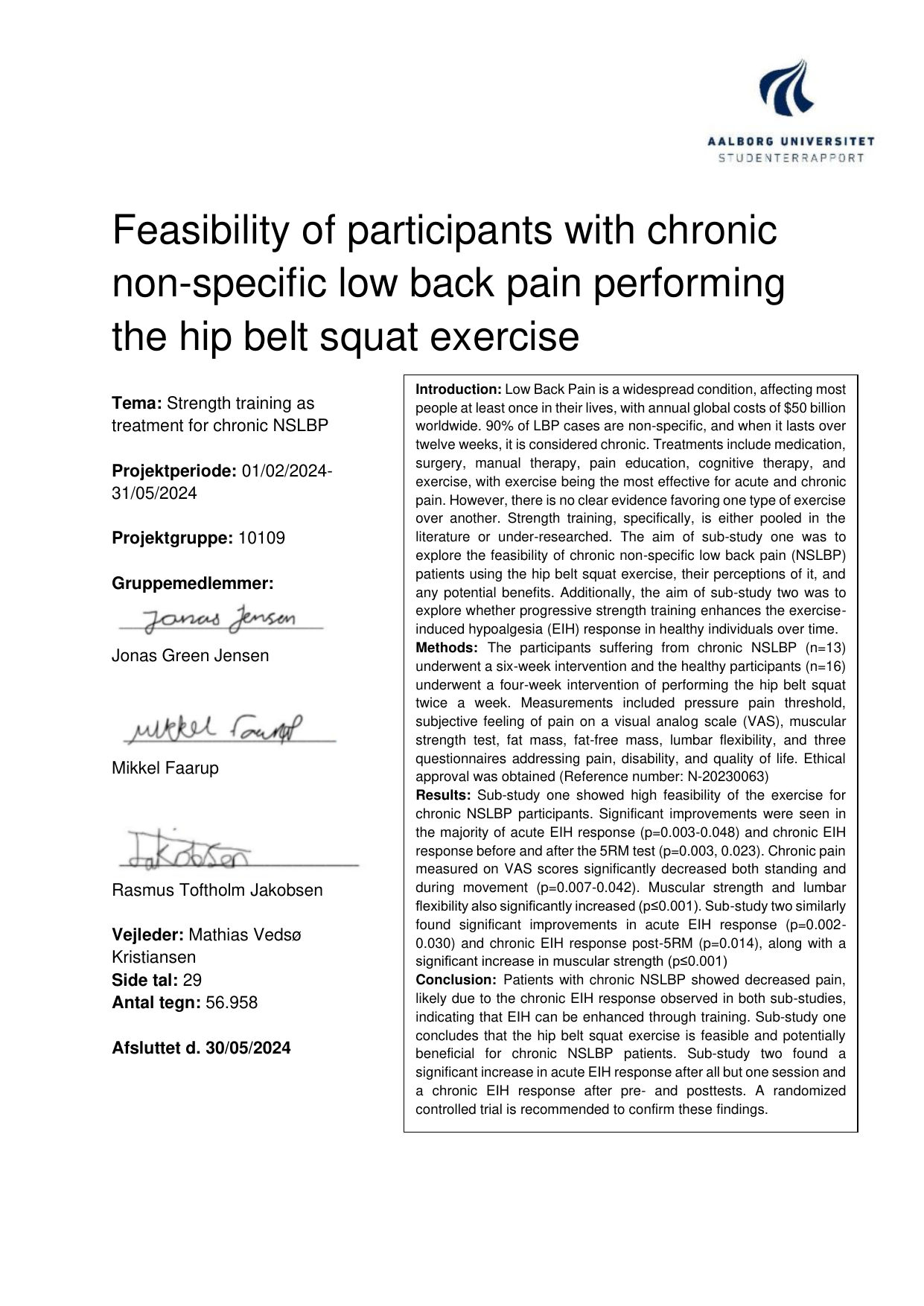
Feasibility of participants with chronic non-specific low back pain performing the hip belt squat exercise
Term
4. semester
Education
Publication year
2024
Submitted on
2024-05-30
Pages
29
Abstract
The aim of sub-study one was to assess the feasibility of hip belt squat training for individuals with chronic non-specific low back pain (NSLBP), and potential benefits. Additionally, the aim of sub-study two was to explore whether progressive strength training enhances the exercise-induced hypoalgesia (EIH) response in healthy individuals over time. The participants suffering from chronic NSLBP (n=13) underwent a six-week intervention and the healthy participants (n=16) underwent a four-week intervention of performing the hip belt squat twice a week. Measurements included pressure pain threshold, subjective feeling of pain on a visual analog scale, muscular strength test, fat mass, fat-free mass, lumbar flexibility, and three questionnaires addressing pain, disability, and quality of life. Ethical approval was obtained (Reference number: N-20230063). Sub-study one revealed high feasibility of the exercise among chronic NSLBP participants. A significant improvement was found in most interventions in the acute EIH response (p=0.003-0.048). A significant increase in chronic EIH response was found when comparing measurements taken before and after the pre- and posttest (0.003 and 0.023). The chronic visual analog scale (VAS) scores showed significant decrease when comparing standing VAS scores at pre- and posttest (p=0.009 and 0.042), and both VAS scores during movement were significantly decreased (p=0.007 & 0.014). Muscular strength was significantly increased post intervention (p≤0.001). Lastly, the lumbar flexibility was also significantly increased (p=0.001). Sub-study two found a significant increase in acute EIH response in all but one session (0.002-0.030). A significant increase in the chronic EIH response was found when comparing measurements taken before and after the pre- and posttest (0.014). A significant increase in muscular strength was found (p≤0.001) post intervention. It appears that patients with chronic NSLBP have a positive response in terms of decreased pain. This improvement can be attributed to the chronic EIH response observed in both sub-studies, suggesting that EIH can be developed through training. Therefore, sub-study one concludes that the hip belt squat exercise is feasible and potentially beneficial for individuals suffering from chronic NSLBP. Sub-study two concludes that there is a significant increase after all but one session in the acute EIH response, and there is a significant increase in chronic EIH response for measurements after the pre- and posttest. However, a randomized controlled trial is recommended to confirm these findings.
Documents
